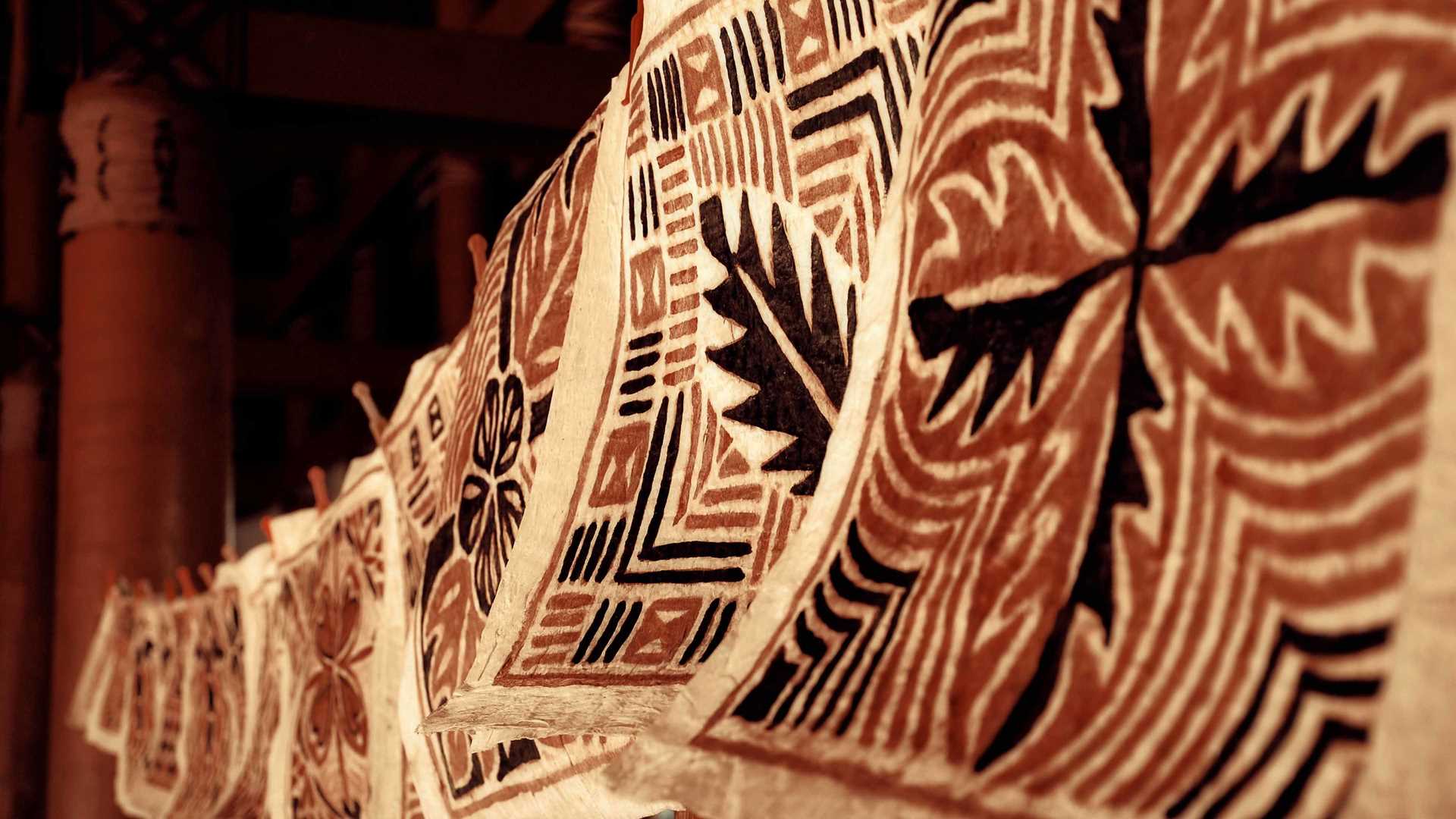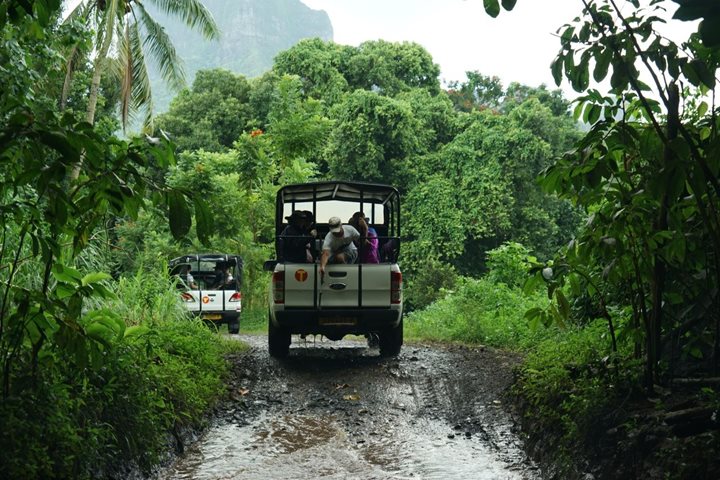Today we arrive at a magical island, trapped in between the past and the future. The traditions, the way of living, and how the people understand the world, are in contrast with tourism and social evolution. Apia was originally a small village, from which the country’s capital took its name. The morning started with a moment to learn about the past in the local cultural village. We were part of a “tapa tradition”, which is the way the ancestors created fibers, clothes, and many more practical resources. Tapa cloth (or simply tapa) is a barkcloth made in the islands of the Pacific Ocean, primarily in Tonga, Samoa, and Fiji, but as far afield as Niue, cook islands, Futuna, Solomon Islands, Java, New Zealand, Vanuatu, Papua New Guinea, and Hawaii (where it is called kapa). In French Polynesia it has nearly disappeared, except for some villages in the Marquesas that continue with the tradition.
A master in the traditional arts showed all of our guests how to create the “tapa” from the extraction of the resource (the Mahute) to the final process, revealed as a beautiful thin and clear fiber. All our guests, including our expedition leader, Jen, were impressed with the expertise and dedication to the practice of the “tapa.” According to our wonderful experts at the cultural village, the ancient tradition passed from one to the next generation not only by oral tradition, but also by dividing the duties among the family and teaching the new generation about that specific topic.
It was also a great time to explore one of many churches available on the island, where many local people are devout. The historic Catholic cathedral in Apia, the Immaculate Conception of Mary Cathedral, was dedicated on 31 December 1867. It was pulled down mid-2011, reportedly due to structural damage from the earthquake of September 2009. A new cathedral was built and dedicated on 31 May 2014.
But ancient art and tradition, religion and church, were not the only things available on the island for us. We also experienced a wonderful trip back in time via the pictures at the museum of the famous Scottish writer Robert Louis Stevenson, which brought back to life the island of many decades ago.
Wildlife, beautiful colors, amazing landscapes, and flora were a part of our unique experience in Upolu, Apia.






